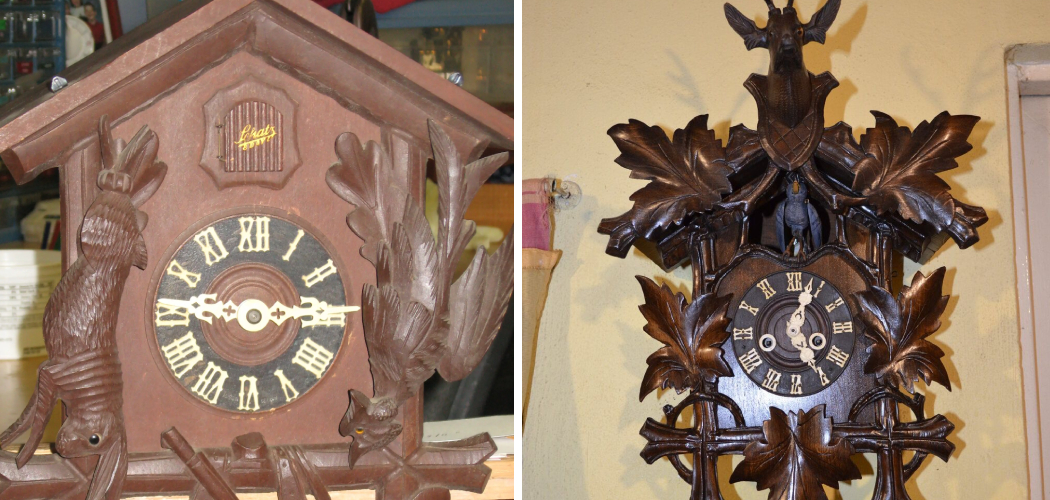Do you ever wish that your home decor could take a walk through time? Dating a cuckoo clock is one of the easiest ways to do just that. These vintage timepieces have been part of homes since the 16th century and remain popular today. Not only does owning a cuckoo clock provide enchanting chimes and melodies as you pass quickly from hour to hour, but it can also be used to create unique crafts or cover up decorative items with its intricate artwork.
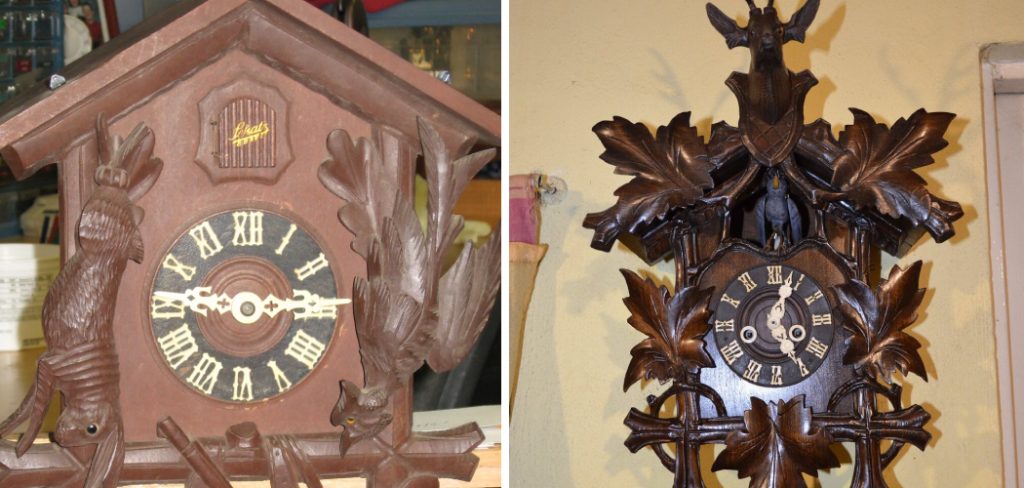
Whether you’ve inherited a cuckoo clock, bought one at a flea market, or found it in your attic, it can be tricky to determine when it was made and its value.
In this blog post, we’ll go over how to date a cuckoo clock like the pros so you can showcase this wonderful decorative piece for years and years to come!
What are the Benefits of Owning a Cuckoo Clock?
Cuckoo clocks have been around for centuries and are loved by many people. They can be used to add a touch of character and charm to any space and can also be an educational tool for children. Cuckoo clocks are unique pieces that invoke nostalgia, tradition, and craftsmanship in your home.
In addition to creating a beautiful atmosphere in your home, cuckoo clocks may also provide monetary value. Knowing the age and condition of your clock will help you determine the price if you ever decide to sell it.
What Will You Need?
Before you get started, there are certain items you’ll need to have on hand.
- An internet connection
- A magnifying glass
- Flashlight
- Pen and paper to take notes
Once you have these items, you’ll be ready to begin your cuckoo clock dating adventure.
9 Easy Steps on How to Date a Cuckoo Clock
Step 1. Examine the Case:
Examine the case of the cuckoo clock. This is where you’ll find most of your clues about how old it is and who made it. Look for any markings, such as the maker’s name or a serial number which is usually located near the back of the clock.
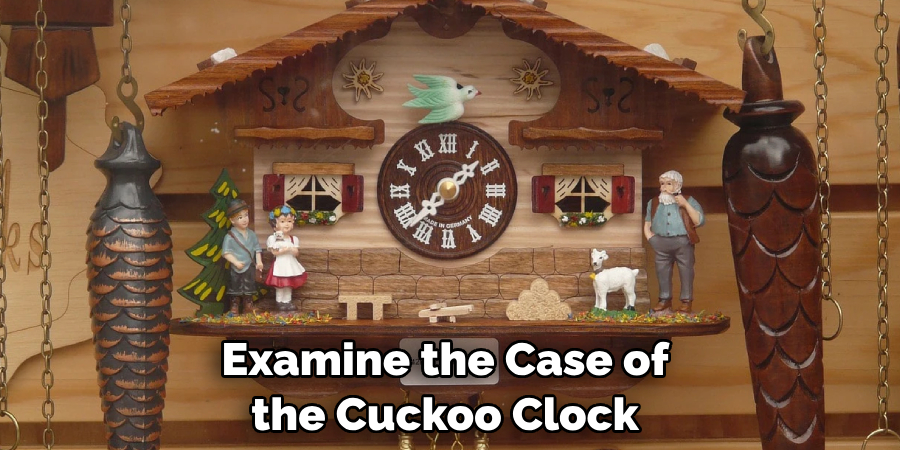
Step 2. Take Pictures:
In addition to writing down any information you find, be sure to take some pictures of your cuckoo clock so that you can refer back to them later. You can also use these pictures to compare your clock with other similar clocks online. Pictures are also helpful for documenting the condition of the clock if you ever decide to sell it.
Step 3. Examine the Movement:
Next, use your flashlight and magnifying glass to examine the movement inside your cuckoo clock. This will help you determine when it was made and can also provide clues about who manufactured it. This is usually found on the back of the clock or printed on the front.
Step 4. Identify Maker Markings:
Look for any symbols or numbers stamped on the movement using your magnifying glass. These are often used to identify the maker and can help you determine when it was made by looking at other cuckoo clocks with similar markings. As a rule, look for symbols such as a star, a crescent moon, or other geometric shapes.
Step 5. Research Online:
Once you’ve collected all your information, it’s time to research online. Check out sites like eBay or Antiques Roadshow for more information about your clock and compare it to others in similar conditions. You may be able to find additional clues that will help you date your clock even further.
Step 6. Valuation Sites:
In addition to researching online, consider visiting a valuation website such as Worthpoint or Value My Stuff so you can get an accurate assessment of the worth and age of your cuckoo clock. These sites will use all the information you’ve gathered to provide an estimate so that you know exactly what your clock is worth. Moreover, these sites also provide resources such as books, videos, and articles that can help you better understand the nuances of clock collecting.
Step 7. Contact an Expert:
If you still haven’t been able to determine the age and value of your cuckoo clock, consider contacting an expert. They can offer more in-depth advice on identifying and dating a cuckoo clock that may not be available online or through research. Be careful to research the expert before you call, as there are many scams online.
Step 8. Clean Your Clock:
Once you’ve determined the age and value of your cuckoo clock, it’s time to give it some TLC! A thorough cleaning will help bring out its beauty and keep it ticking for years to come. Start by cleaning the case with a mild soap and water solution, then polish it with furniture wax. Next, use a soft cloth to clean any dust that has been collected inside the clock movement.
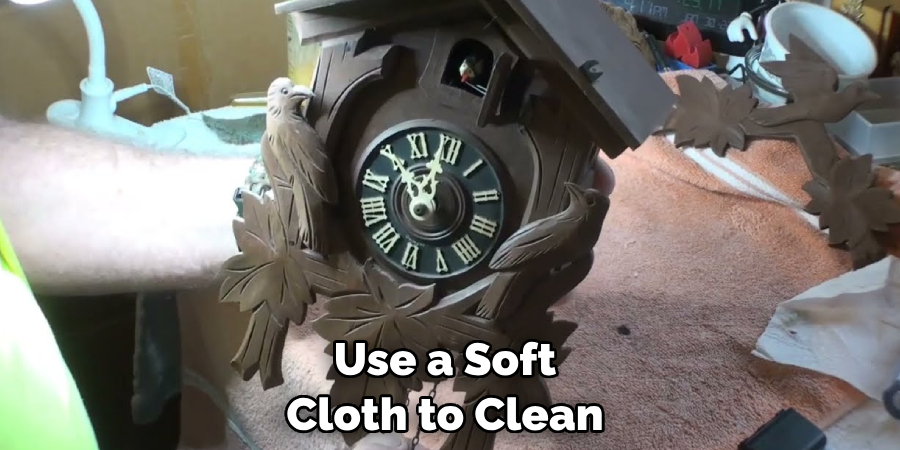
Step 9. Set Your Clock:
Now that you’ve cleaned your cuckoo clock, it’s time to set it! This process is fairly simple and can be done in just a few steps. First, ensure the hour hand is pointing straight up at 12 o’clock and the minute hand is also pointing straight up at 12 o’clock. Then, turn the weights until they reach their full potential, and you hear a “click” sound from each one. Finally, turn the pendulum to its grooved position and make sure it’s swinging.
You can now enjoy your cuckoo clock for years to come! By following these steps, you can easily determine the age and value of your cuckoo clock so that you can appreciate its beauty for many more years to come. Happy collecting!
5 Additional Tips and Tricks
1. Check the style of the clock. Cuckoo clocks come in a variety of styles, from traditional Black Forest designs to more modern looks. You can often date a cuckoo clock by its design features and materials.
2. Inspect the craftsmanship. Many older cuckoo clocks were handcrafted and had unique details that may help you determine their age. Look for signs of aging, such as wear on hinges or door handles or fading enamel paint, which could indicate an antique clock.
3. Research the manufacturer or maker’s mark. Some cuckoo clocks are marked with a manufacturer’s name or logo, which can be used to narrow down the date of manufacture. Alternatively, look for makers’ marks, which may be stamped on the back or underside of the clock.
4. Study the chime type and number of bells. Different cuckoo clocks have different types of chimes, with older models typically having a more complex sound than newer ones. Also, some older clocks had four bells instead of two, so if you find one like this, it could suggest a date earlier than the 1960s-70s.
5. Consult an expert. If all else fails, consider taking your cuckoo clock to an antique dealer or clock repair specialist for further advice on its age and value. With their experience and knowledge, they can often offer valuable insights that could help you accurately date your piece.
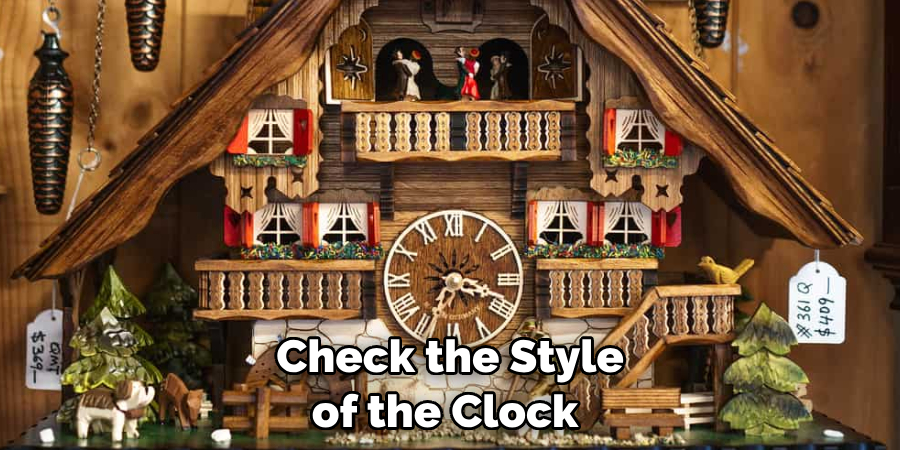
With these tips and tricks in mind, you should be able to confidently date your cuckoo clock and enjoy the history that comes with it.
6 Things You Should Avoid
1. Don’t try to clean the clock yourself. Cuckoo clocks are delicate and should only be cleaned by a professional.
2. Don’t try to repair the clock yourself. If you do not have experience in fixing cuckoo clocks, it is best to take them to a professional repair person.
3. Avoid using harsh chemicals or abrasives on the clock. These can damage delicate components and ruin the finish of your clock.
4. Do not attempt to change any internal parts without consulting an expert first. Many antique clocks contain rare and valuable components that someone with experience and knowledge of these pieces should only handle.
5. Refrain from displaying your cuckoo clock in direct sunlight or humid areas, which can cause damage over time. Find a dry place away from extremes of temperature to ensure its longevity.
6. Don’t forget to wind the clock! It is important to remember to wind your cuckoo clock every eight days or so, depending on the type of movement. Failing to do so can cause it to stop working and potentially damage internal components.
Avoiding these pitfalls will help you ensure the best care for your cuckoo clock and keep it in the best possible condition. With proper maintenance,

Conclusion
How to date a cuckoo clock may seem daunting, but with the right information and a little creativity, you’ll soon be an expert. Just remember that older clocks made out of wood or tin had more character than those made from plastic or metal. Being able to date a clock accurately will add to its charm and value.
Furthermore, it can provide valuable insight into the styles and practices of eras long gone by. Not only is it advantageous for antique experts, but becoming bilingual in time can be an exciting hobby for any collector or craftsperson.
Why not try to date a cuckoo clock today? Who knows, if you take the right steps–you could have yourself beautiful work of art served to you on the wings of time. Go ahead and show off your efforts– craft them into something truly special.
